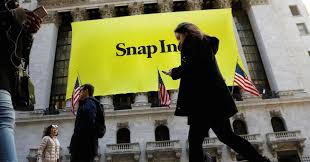Snapchat IPO: A Guide to Buying Snap Stock

It’s the day technology companies and investors have been waiting for: Snap, the parent company of disappearing-photo app Snapchat, has finally priced its stock in the most highly anticipated initial public offering in years.
Snap stock will begin trading Thursday at $ 17 per share on the New York Stock Exchange, under ticker symbol SNAP.
The IPO price is above Snap’s expected range of $ 14 to $ 16 per share, and values the company at $ 24 billion.
When can investors buy Snap stock? The U.S. stock market opens at 9:30 a.m. on Thursday, and Snap shares are expected to start trading between 11 a.m. and 11:30 a.m. Alibaba (baba), for one—which will continue to hold its title as the biggest IPO on a U.S. stock exchange in history even after Snap goes public—began trading at 11:54 a.m. the day of its debut in Sept. 2014.
Snap stock will come with a few caveats that investors should be aware of before buying. Snap grew revenue roughly 600% in 2016 to more than $ 404 million, but it is still not profitable, losing nearly $ 515 million last year.
That means that Snap stock will be insanely expensive: At a $ 24 billion valuation, Snap shares will have a price-to-sales ratio of 59, making it far richer than Facebook (fb) stock and other social media companies—and likely the most expensive tech IPO ever. (If you use the ratio of market cap to sales, Snap is still valued at nearly 28 times sales—far more than its tech company peers.)
Also, in an unprecedented move for U.S. publicly traded companies, Snap stock will have zero voting rights. That means Snap shareholders will not have standard checks and balances that are considered a pillar of corporate governance. They won’t be able to nominate or replace directors on the board, vote for or against proposed mergers or acquisitions, or submit shareholder proposals at an annual meeting—which activist investors frequently use to push management to adopt their agenda. MSCI on Wednesday gave Snap one of its lowest grades of corporate governance, a “B,” labeling it a “laggard” on such measures.
Investors will be watching Snap stock closely Thursday to see if it goes up or down—indications of whether investment bankers priced the shares appropriately. But in any case, Snap, which raised $ 3.4 billion in its IPO, is now officially the biggest American technology offering since Facebook, which raised more than $ 16 billion and was valued at $ 104 billion at its IPO in 2012.
There is one positive sign that Snap has timed its IPO perfectly: U.S. stocks hit new highs on Wednesday, with the Dow Jones industrial average rising more than 300 points to above 21,000 for the first time.

